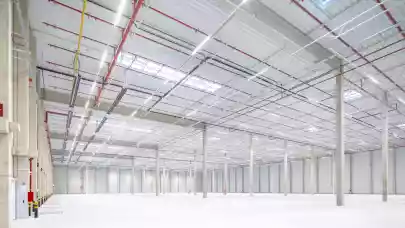
The European logistics markets are currently unstoppable and are reaching record levels. Supported by the flourishing online trade and a surge in demand due to last-mile requirements, the growth prospects continue to be very positive, both from an investment and user perspective, according to Catella’s Logistics Market Map Europe 2021.
The very good mix is increasingly attracting investors from outside the sector, with global supply chain issues currently putting the logistics sector in particular focus and European distribution centres and warehouses gaining in attractiveness. The current British fuel crisis shows once again that the transport, traffic and logistics markets are extremely dependent on personnel and interconnected, but also highly susceptible to external shocks, as exemplified by the post-Brexit phase. Although the number of project developments for logistics properties is growing steadily, especially in the already well-known European logistics clusters, this limited supply is offset by significantly higher demand.
Even if the excess return compared to other asset classes has decreased or disappeared in many places, the high demand for space coupled with a shortage of supply means that investment activity is expected to continue to increase, with a particular focus on urban and suburban areas. This is also reflected in Catella’s annual market analysis: strong price dynamics accompanied by further declining yields in the majority of the 107 European logistics regions analysed.
The yield compression was able to gain momentum once again:
- Currently, the European average yield is 4.98%, 43 basis points below the previous year's value, ranging from 3.3% in Berlin to 8.3% in Tartu.
- The sharpest decline was recorded in Vienna, where it fell by 1.6 percentage points to 3.4%.
- The current European prime rent averages €5.69/sqm, ranging from €3.70/sqm in Liège to €16.20/sqm in London.
- In Germany, France, the UK and the Netherlands, prime yields for logistics properties have now fallen well below the 4% mark. Individual transactions can often be observed close to the 3% mark.
- In Poland and the Czech Republic, rising prices can be observed across the board.
- We continue to find the highest yield values in the three Baltic countries with top yields of around 7.2%.
- The Nordic markets still appear relatively cheap compared to their European counterparts, with Copenhagen (4.8%), Helsinki (4.7%) and Stockholm (3.75%) in particular experiencing dynamic yield compression.
- The European logistics transaction volume more than doubled in H1 2021 compared to the previous year's figure (€12.7 billion) to around €26.3 billion.
In conclusion, the Europe-wide dynamics in the logistics property market are reflected in our map when analysing the variables transaction volumes, rents & yields; supply shortages and demand for space manifest themselves in broad-based yield declines. Given the congestion in global supply chains, which is unlikely to ease in the foreseeable future, Catella sees no end to the dynamic market development.



